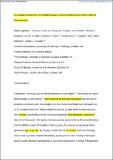Files in this item
A skeleton from the Middle Jurassic of Scotland illuminates an earlier origin of large pterosaurs
Item metadata
| dc.contributor.author | Jagielska, Natalia | |
| dc.contributor.author | O’Sullivan, Michael | |
| dc.contributor.author | Funston, Gregory F. | |
| dc.contributor.author | Butler, Ian B. | |
| dc.contributor.author | Challands, Thomas J. | |
| dc.contributor.author | Clark, Neil D.L. | |
| dc.contributor.author | Fraser, Nicholas C. | |
| dc.contributor.author | Penny, Amelia | |
| dc.contributor.author | Ross, Dugald A. | |
| dc.contributor.author | Wilkinson, Mark | |
| dc.contributor.author | Brusatte, Stephen L. | |
| dc.date.accessioned | 2023-02-22T00:40:27Z | |
| dc.date.available | 2023-02-22T00:40:27Z | |
| dc.date.issued | 2022-03-28 | |
| dc.identifier | 278011244 | |
| dc.identifier | 2d8d37ac-1d94-406d-8c9c-aa468c3318ad | |
| dc.identifier | 85126949651 | |
| dc.identifier | 000787558000022 | |
| dc.identifier.citation | Jagielska , N , O’Sullivan , M , Funston , G F , Butler , I B , Challands , T J , Clark , N D L , Fraser , N C , Penny , A , Ross , D A , Wilkinson , M & Brusatte , S L 2022 , ' A skeleton from the Middle Jurassic of Scotland illuminates an earlier origin of large pterosaurs ' , Current Biology , vol. 32 , no. 6 , pp. 1446-1453 . https://doi.org/10.1016/j.cub.2022.01.073 | en |
| dc.identifier.issn | 0960-9822 | |
| dc.identifier.other | RIS: urn:663521CCFBD561B706B49C204F273308 | |
| dc.identifier.other | ORCID: /0000-0002-4392-8090/work/108919683 | |
| dc.identifier.uri | https://hdl.handle.net/10023/27028 | |
| dc.description | Funding: The authors thank the National Geographic Society (GEFNE185-16 to PI S.L.B.) for funding the fieldtrip on which the new pterosaur was found, a Philip Leverhulme Prize (to S.L.B.) for funding Edinburgh’s palaeontology laboratory, NERC for N.J.’s E4DTP studentship (NE/S007407/1), and the Royal Society (NIF\R1\191527 to G.F.F.) for funding the paleohistology workspace. | en |
| dc.description.abstract | Pterosaurs were the first vertebrates to evolve flight1,2 and include the largest flying animals in Earth history.3,4 While some of the last-surviving species were the size of airplanes, pterosaurs were long thought to be restricted to small body sizes (wingspans ca. <1.8–1.6 m) from their Triassic origins through the Jurassic, before increasing in size when derived long-skulled and short-tailed pterodactyloids lived alongside a diversity of birds in the Cretaceous.5 We report a new spectacularly preserved three-dimensional skeleton from the Middle Jurassic of Scotland, which we assign to a new genus and species: Dearc sgiathanach gen. et sp. nov. Its wingspan is estimated at >2.5 m, and bone histology shows it was a juvenile-subadult still actively growing when it died, making it the largest known Jurassic pterosaur represented by a well-preserved skeleton. A review of fragmentary specimens from the Middle Jurassic of England demonstrates that a diversity of pterosaurs was capable of reaching larger sizes at this time but have hitherto been concealed by a poor fossil record. Phylogenetic analysis places D. sgiathanach in a clade of basal long-tailed non-monofenestratan pterosaurs, in a subclade of larger-bodied species (Angustinaripterini) with elongate skulls convergent in some aspects with pterodactyloids.6 Far from a static prologue to the Cretaceous, the Middle Jurassic was a key interval in pterosaur evolution, in which some non-pterodactyloids diversified and experimented with larger sizes, concurrent with or perhaps earlier than the origin of birds. | |
| dc.format.extent | 8 | |
| dc.format.extent | 2831298 | |
| dc.language.iso | eng | |
| dc.relation.ispartof | Current Biology | en |
| dc.subject | Pterosaur | en |
| dc.subject | Jurassic | en |
| dc.subject | Scotland | en |
| dc.subject | Isle of Skye | en |
| dc.subject | Wingspan | en |
| dc.subject | Paleontology | en |
| dc.subject | Evolution | en |
| dc.subject | Fossil | en |
| dc.subject | Histology | en |
| dc.subject | Phylogeny | en |
| dc.subject | QE Geology | en |
| dc.subject | QH Natural history | en |
| dc.subject | DAS | en |
| dc.subject | AC | en |
| dc.subject | MCC | en |
| dc.subject.lcc | QE | en |
| dc.subject.lcc | QH | en |
| dc.title | A skeleton from the Middle Jurassic of Scotland illuminates an earlier origin of large pterosaurs | en |
| dc.type | Journal article | en |
| dc.contributor.institution | University of St Andrews. School of Biology | en |
| dc.identifier.doi | 10.1016/j.cub.2022.01.073 | |
| dc.description.status | Peer reviewed | en |
| dc.date.embargoedUntil | 2023-02-22 |
This item appears in the following Collection(s)
Items in the St Andrews Research Repository are protected by copyright, with all rights reserved, unless otherwise indicated.

